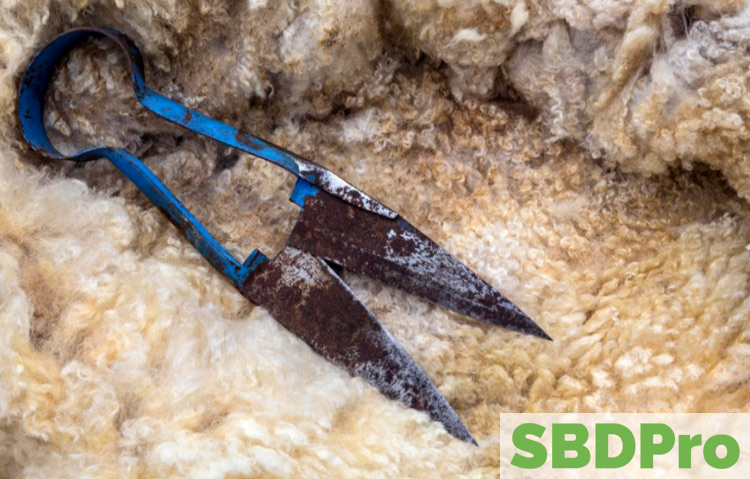Wool is commonly used in many everyday products, from socks and sweaters to blanket and rugs. Animal-conscious consumers may wonder if shearing wool from sheep is a harmful process.
Shearing sheep is a labor-intensive practice that requires quite a bit of skill and strength. Many animals don’t care to be handled, and electric clippers can cause distress. Some sheep farmers corral and fast their sheep prior to shearing, which can cause anxiety to the animal.
However, optimum skin health can be maintained with at least once yearly shearing. Some breeds do better with two.
Myths About Shearing
Some people believe that shearing is unnecessary. While it’s true that certain sheep breeds will naturally shed their hair and not require shearing, most modern sheep breeds have been bred to grow a thick fleece that mats and needs to be removed manually to keep the skin of the sheep healthy and free of infection.
It’s true that sheep can suffer from hypothermia if shorn too early or caught in a cold snap after their heavy layer of fleece has been removed. Best shearing practices recommend moving sheep to higher altitudes or colder temperatures when possible to help them build up a layer of protective fat prior to shearing. However, young sheep will have less fat and be more susceptible to the cold.
A responsible sheep farmer not only studies their animals but the weather as well. They should be prepared to halt the shearing process if freezing weather is coming, provide plenty of extra food to animals that have been shorn, and get them into shelter to help them survive unexpected cold temperatures.
Risks of Shearing
One of the greatest risks of shearing sheep is cutting into the skin. Shearing slowly and carefully is critical in this regard. Sheep give you beautiful fiber, companionship, and even keep grass cut. So why rush when shearing and risk hurting them?
Other shearing practices include a fungicide or insecticide dip. This contaminates wool products and puts unnecessary stress on the animal. If you’re interested in organic wool, take care not to purchase wool from any farmer or shearer that engages in either of these practices.
A safer method of shearing sheep is crocheting or crutching. This process involves shearing away the wool around the vulva and udder. This will keep the ewe cleaner, less susceptible to flies and make it easier for the lamb to latch on. In addition, this limited shearing will cause less stress to a pregnant ewe.
Benefits of Shearing
While it’s true that some primitive breeds will shed their hair and not require shearing, the human practice of animal husbandry has led to several varieties of sheep that must be shorn to keep their skin healthy. Bacterial illnesses, such as fleece rot, can form under the fleece and only be found during shearing. The wool taken from sheep with a bacterial illness or infection can contaminate the other sheep in the flock and negatively impact humans. Infected fleece must be disposed of carefully.
If you look online, you can find sheep shearing competitions for those who can shear a sheep the fastest. However, manual tools and slow shearing are the best way to keep the animal calm and to get a careful look at their skin under the fleece.
Ultimately, healthy sheep will be easier to shear. This process of slowly removing the fleece with hand tools and a careful eye will result in a healthier flock and better-quality wool products. While some sheep farmers will find it necessary to bring in help, these farmers must instruct all shearers in the safest and least invasive way to protect sheep from injury and chemical exposure.

